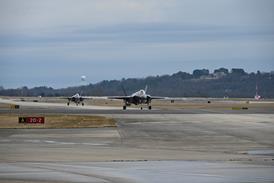Australian Piper PA31-350 was ill-equipped for reported icing conditions in Victoria
The pilot of a Piper PA31-350 Navajo Chieftain that crashed at a ski resort in Victoria, Australia last month flew into known hazardous weather despite the aircraft not being equipped for such conditions. The pilot also proceeded with the flight after two aircraft earlier the same day were unable to complete global navigation satellite system (GNSS) approaches at the destination airport due to the conditions.
The Chieftain, on a visual flight rules flight from Melbourne’s Essendon airport, crashed into a tree covered ridge, 5km (2.7nm) southeast of Mount Hotham aerodrome, killing the pilot and two passengers, according to the Australian Transport Safety Bureau’s (ATSB) preliminary report into the 8 July crash.
Although the ATSB cannot comment at this stage on the approach used, industry sources suggest the pilot was conducting his own global positioning system approach that followed a road rather than the published route.
Before taking off from Essendon the pilot amended his destination to Wangaratta due to reports of adverse weather at Mount Hotham. During the flight, however, the pilot changed his destination to Mount Hotham, despite being told twice directly by the airport manager and once via the Flightwatch radio service that he would be unable to land the aircraft, which was not equipped for flight into forecast or known icing conditions.
The aerodrome was experiencing low cloud, poor visibility and snow showers, and icing conditions were predicted. Despite this, the pilot continued to Mount Hotham, informing the Flightwatch operator that “our customer [a Queensland property developer] is keen to have a look at it.”
Earlier that day a Bombardier Dash 8 and a Cessna Citation had attempted GNSS approaches to the aerodrome, but the aircraft diverted as the crews were unable to establish visual reference at the cloud and visibility minima, says the ATSB.
The pilot of the Chieftain requested a change of flight category to instrument flight rules to conduct a GNSS approach, but he did not follow the published procedure, says the ATSB, despite GNSS working properly at the time. The pilot believed he was on final approach to Mount Hotham when the aircraft crashed into a steep slope. At the time of the crash there were snow showers and an unbroken cloud base at between 100ft and 200ft (30m and 60m). Visibility was 300m with a temperature of 0°C (32°F).
EMMA KELLY/PERTH
Source: Flight International























